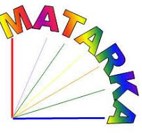Inter-annual variability in the Aculeata pollinators of Adonis vernalis L.
Abstract
Aculeata pollinators of Adonis vernalis were collected in the spring of 2018 and 2019 to compare the species composition and number of pollinators in different years. 364 individuals were encountered in 2018 and only two of them were males. In 2019, 717 individuals were captured out of which four were males. The number of collected individuals in the same amount of time was significantly different in the two years. In 2019, we collected nearly twice as much pollinators than in 2018. Nine species were observed in 2018 only, nine in 2019 only, while 13 species were collected in both years. Species occurring in both years accounted for most of the dominance, thus the pollinating community can be considered stable. Lasioglossum xanthopus was dominant among the Aculeata pollinators of A. vernalis in both years, while L. marginatum had a subdominant role. The Lasioglossum and Andrena genera were the most species-rich in both years. In 2018, the Osmia and Nomada genera were the least species rich, while for 2019 these were the Ludita and Polistes genera. The daily rhythm of flight of pollinators was different in the two study years as well. In 2018, the pollinators were most active in the period between 12 and 2 p.m., while in 2019 we collected the most pollinators between 11 a.m. and noon. In 2018, the number of collected individuals per hour fluctuated, but in 2019 it continuously increased until 10-11 a.m., and then monotonously decreased. Our results confirm the influence of different years on the species composition, species number and daily rhythm of flight for A. vernalis pollinators. In spite of the often-mentioned recent pollination crisis, we collected a considerable number of pollinators in both years. Conservation management of the studied area and the protection of pollinators are very important to maintain the well-functioning plant-pollinator systems in A. vernalis populations.
References
Allen-Wardell G., Bernhardt P., Bitner R., Burquez A., Buchmann S., Cane J., Cox P. A., Dalton V., Feinsinger P., Ingram M., Inouye D., Jones C. E., Kennedy K., Kevan P., Koopowitz H., Medellin R., Medellin-Morales S., Nabhan G. P., Pavlik B., Tepedino V., Torchio P., Walker S. 1998: The potential consequences of pollinator declines on the conservation of biodiversity and stability of food crop yields. Conservation Biology 12(1): 8–17. https://doi.org/10.1111/j.1523-1739.1998.97154.x
Biesmeijer J. C., Roberts S. P. M., Reemer M., Ohlemüller R., Edwards M., Peeters T., Schaffers A. P., Potts S. G., Kleukers R., Thomas C. D., Settele J., Kunin W. E. 2006: Parallel declines in pollinators and insect-pollinated plants in Britain and the Netherlands. Science 313: 351−354. https://doi.org/10.1126/science.1127863
Biró É., Bódis J., Nagy T., Tökölyi J., Molnár V. A. 2015: Honeybee (Apis mellifera) mediated increased reproductive success of a rare deceptive orchid. Applied Ecology and Environmental Research 13(1): 181–192. https://doi.org/10.15666/aeer/1301_181192
Bogusch P. 2007: Vespoidea: Tiphiidae (trněnkovití). Acta Entomologica Musei Nationalis Pragae 11: 85–92.
Charlesworth D., Charlesworth B. 1987: Inbreeding depression and its evolutionary consequences. Annual Review of Ecology, Evolution and Systematics 18(1): 237–268. https://doi.org/10.1146/annurev.es.18.110187.001321
CITES [Convention on International Trade in Endangered Species of Wild Fauna and Flora] 2000: Proposal 11.61: Inclusion of Adonis vernalis in Appendix II in accordance with Article II 2(a). Potted live plants to be excluded. Consideration of Proposals for Amendment of Appendices. Eleventh meeting of the Conference of the Parties - Gigiri (Kenya), 10-20 April 2000. https://cites.org/eng/cop/11/prop/index.php, https://cites.org/sites/default/files/eng/cop/11/prop/61.pdf (Utolsó letöltés: 2019.08.05.)
Denisow B., Wrzesień M. 2006: The study of blooming and pollen efficiency of Adonis vernalis L. in xerothermic plant communities. Journal of Apicultural Science 50(1): 25–32.
Denisow B., Wrzesien M., Cwener A. 2014: Pollination and floral biology of Adonis vernalis L. (Ranunculaceae) – a case study of threatened species. Acta Societatis Botanicorum Poloniae 83(1): 29–37. https://doi.org/10.5586/asbp.2014.001
Forycka A., Szczyglewska D., Buchwald W. 2004: Stock-taking of Adonis vernalis L. in the selected localities in Poland. Bulletin of Botanical Gardens 13: 55–58.
Gostin I. N. 2009: Scanning electron microscopy investigations regarding Adonis vernalis L. flower morphology. Analele Universitatii din Oradea, Fascicula Biologie 16(2): 80–84.
Işcanoğlu S., Bağriaçik N. 2011: Polistes gallicus (L.), Polistes nimpha (Christ) ve Vespula germanica (Fab.) (Hymenoptera: Vespidae) Türlerinde Zehir Aygıtının Ultramorfolojik Karşılaştırılması. Kafkas Universitesi Veteriner Fakultesi Dergisi 17(4): 621–624. https://doi.org/10.9775/kvfd.2010.4380
Jakus
P. 1980: Márkó. Magyarázó a Bakony hegység 20 000-es földtani térképsorozatához. Magyar Állami Földtani Intézet, Budapest. 58 pp.
Jankowska-Błaszczuk M. 1988: Morphological-developmental properties as an agent forming spatial structure of Adonis vernalis (L.) populations. Acta Societatis Botanicorum Poloniae 57(4): 573–587. https://doi.org/10.5586/asbp.1988.055
Łuszczyński L., Łuszczyńska B. 2009: Current resources of the population of Adonis vernalis L. in the Niecka Nidziańska basin. Herba Polonica 55(3): 20–29.
Mészáros T., Galambos I., Kevey B. 2018: Adonis vernalis L. populációk társulástani viszonyainak összehasonlítása Veszprém megyében. Folia Musei historico-naturalis Bakonyiensis. A Bakonyi Természettudományi Múzeum Közleményei 35: 35–61.
Mészáros T., Józan Zs. 2018: Pollinators of Pulsatilla grandis Wender. in Southern Bakony (Hungary). Applied Ecology and Environmental Research 16(5): 7045–7062. https://doi.org/10.15666/aeer/1605_70457062
Novais S. M. A., Nunes C. A., Santos N. B., D‘Amico A. R., Fernandes G. W., Quesada M., Braga R. F., Neves A. C. O. 2016: Effects of a Possible Pollinator Crisis on Food Crop Production in Brazil. Plos One 11(11): e0167292. https://doi.org/10.1371/journal.pone.0167292
Patkó F. 2017: A rovarok (Insecta) általi beporzás. Acta Scientiarum Transylvanica 25(3): 126–132.
Schnittler M., Günther K.F. 1999: Central European vascular plants requiring priority conservation measures – an analysis from national Red Lists and distribution maps. Biodiversity and Conservation 8(7): 891–925.


















